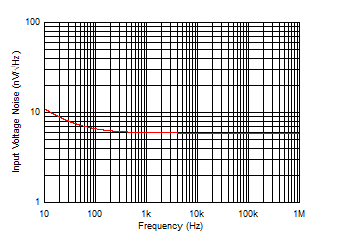SBOSA95D May 2022 – December 2023 OPA2863A , OPA863A
PRODUCTION DATA
- 1
- 1 Features
- 2 Applications
- 3 Description
- 4 Device Comparison Table
- 5 Pin Configuration and Functions
-
6 Specifications
- 6.1 Absolute Maximum Ratings
- 6.2 ESD Ratings
- 6.3 Recommended Operating Conditions
- 6.4 Thermal Information: OPA863A
- 6.5 Thermal Information: OPA2863A
- 6.6 Electrical Characteristics: VS = ±5 V
- 6.7 Electrical Characteristics: VS = 3 V
- 6.8 Typical Characteristics: VS = ±5 V
- 6.9 Typical Characteristics: VS = 3 V
- 6.10 Typical Characteristics: VS = 3 V to 10 V
- 7 Detailed Description
- 8 Application and Implementation
- 9 Device and Documentation Support
- 10Revision History
- 11Mechanical, Packaging, and Orderable Information
Package Options
Refer to the PDF data sheet for device specific package drawings
Mechanical Data (Package|Pins)
- DSN|10
Thermal pad, mechanical data (Package|Pins)
Orderable Information
6.10 Typical Characteristics: VS = 3 V to 10 V
at VOUT = 2 VPP, RF = 0 Ω for G = 1 V/V, otherwise RF = 1 kΩ for other gains, CL = 1 pF, RL = 2 kΩ referenced to mid‑supply, G = 1 V/V, input and output referenced to mid‑supply, and TA ≅ 25°C (unless otherwise noted)

| Small-signal response |




| VOUT = 20 mVPP |



| DSN package |